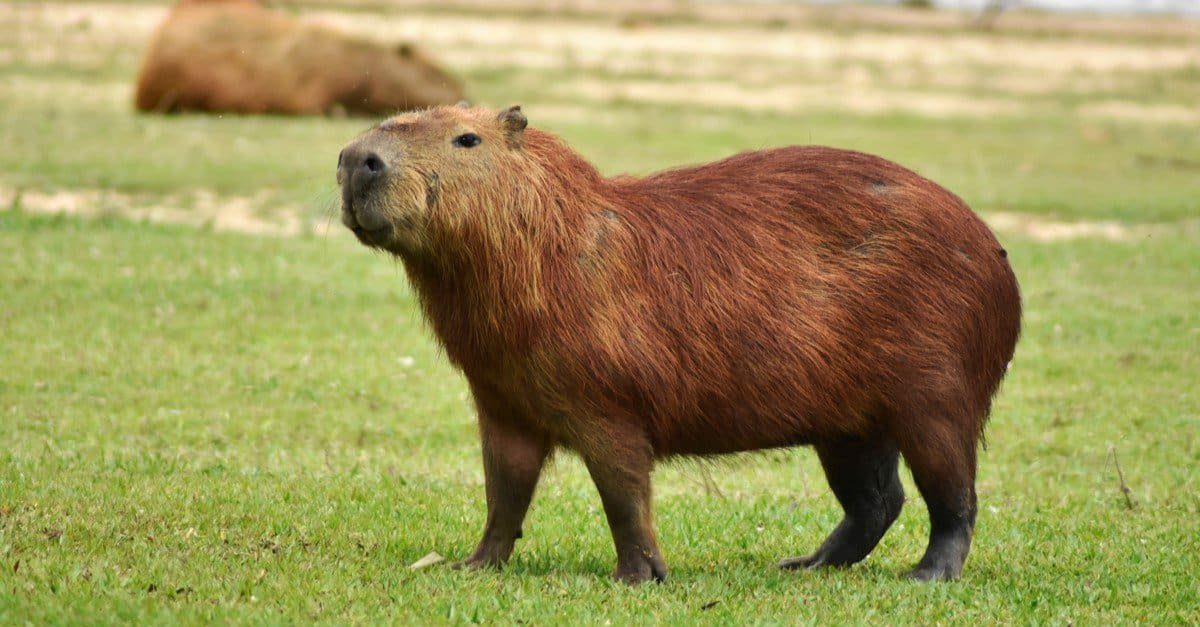Table of Contents
In this article, you’ll discover the fascinating world of capybaras and their dietary habits. Have you ever wondered what these adorable creatures munch on? Well, get ready to uncover the answer! From the amount they consume to the types of food they prefer, we’ll explore the capybaras’ diet in this captivating piece. So, let’s set off on a journey to unravel the mysteries behind these giant rodents’ culinary preferences!

Habitat and Behavior of Capybaras
Native Environment
Capybaras, the largest rodents in the world, are native to Central and South America. They can be found throughout a range of habitats, including savannas, dense forests, and wetlands. These sociable creatures are highly adaptable, but they prefer areas with access to water, as they are semi-aquatic animals.
Semi-Aquatic Lifestyle
Capybaras have remarkable adaptations to their semi-aquatic lifestyle. They are excellent swimmers and spend a significant amount of their time in water, whether it’s lakes, rivers, or even marshy areas. Their bodies are well-suited for this lifestyle, with webbed feet that facilitate swimming and navigating through aquatic vegetation. They also possess dense and waterproof fur, which helps protect them from the elements while submerged.
Herbivorous Diet of Capybaras
Overview
Capybaras have a strictly herbivorous diet, meaning they feed exclusively on plant material. Their eating habits revolve around consuming a variety of grasses, plants, and aquatic vegetation. This diet provides them with the necessary nutrients to thrive in their natural environment.
Grasses and Plants
Grasses play a crucial role in the capybara’s diet. They have a specialized digestive system that allows them to efficiently process the tough cellulose present in grasses. Capybaras graze and nibble on a wide range of grass species, which provide them with essential nutrients such as carbohydrates and fiber. Additionally, they also consume various types of plants, including leaves, stems, and shoots, further diversifying their diet and nutrient intake.
Aquatic Vegetation
Being semi-aquatic animals, capybaras have unique access to a vast array of aquatic vegetation. They feed on water plants such as water hyacinths, water lilies, and duckweeds. These plants are rich in nutrients and help supplement the capybara’s diet, especially during seasons when grasses and other terrestrial plants may be scarce. The ability to consume aquatic vegetation provides capybaras with a diverse and well-rounded diet.

Water Consumption
Importance for Capybaras
Water not only plays a crucial role in the capybara’s habitat but also holds immense importance for their survival. Capybaras are dependent on water sources to regulate their body temperature and keep their skin hydrated. They rely on frequent dips in the water to cool down during hot periods, as they don’t possess sweat glands. Additionally, being semi-aquatic animals, capybaras obtain a significant portion of their diet from aquatic vegetation, making access to water essential for their sustenance.
Sources of Water
Capybaras have access to various sources of water in their habitats. These include rivers, streams, ponds, and even man-made bodies of water like reservoirs and irrigation canals. They are excellent swimmers and can be frequently observed frolicking in water bodies. Capybaras are known to drink water directly from these sources, ensuring their hydration needs are met. The availability of water sources heavily influences their habitat preferences and distribution.
Seasonal Variations in Diet
Diet Changes throughout the Year
Capybaras’ diet exhibits significant variations throughout the seasons. These changes in diet are primarily a result of the availability of plant species and the impact of climatic conditions. During the wet season, when grasses and plants are abundant, capybaras predominantly feed on these terrestrial food sources. The high nutrient content in the vegetation during this season helps capybaras build up fat reserves, preparing them for the leaner times ahead. In contrast, during the dry season when food sources are scarce, capybaras turn to aquatic vegetation, taking advantage of their semi-aquatic lifestyle to sustain themselves.

Supplemental Food Sources
Fruits and Vegetables
While capybaras primarily consume grasses and plants, they also supplement their diet with fruits and vegetables whenever available. In certain regions where capybaras coexist with human settlements, they often raid orchards and vegetable gardens, feeding on crops such as bananas, melons, and squash. While the consumption of these supplemental food sources is not their mainstay, it adds dietary variety and richness to their overall nutrition.
Farming Crops
Capybaras’ adaptability extends to making use of agricultural crops grown by humans. They are known to venture into croplands and feed on crops like rice, corn, and sugarcane. While this behavior may sometimes lead to conflicts with farmers, it showcases the capybara’s resourcefulness in finding alternative food sources, particularly when their natural habitat is limited.
Digestive System Adaptations
Anatomy and Physiology
Capybaras have unique adaptations in their digestive system that enable them to efficiently process their herbivorous diet. They possess a complex, multi-chambered stomach that aids in the breakdown of plant material through fermentation. Microorganisms residing in their gut help break down cellulose, a tough component present in grasses and plants, into simpler sugars that can be easily digested. This adaptation allows capybaras to extract maximum nutritional value from their plant-based diet.

Capybara Feeding Patterns
Feeding Times
Capybaras are predominantly diurnal creatures, meaning they are most active during the day. Therefore, their feeding patterns align with their diurnal nature. They typically feed in the early morning and late afternoon, taking advantage of suitable temperatures and light for both foraging and vigilant grazing. These feeding times also coincide with their social behaviors, as capybaras are highly social animals and often graze and feed together in large groups.
Foraging Strategies
Capybaras employ various strategies when foraging for food. They are adept at recognizing edible plant species and can selectively consume the most nutritious parts while leaving behind less desirable components. Using their sharp teeth, capybaras can efficiently graze on grasses and plants, nipping off portions without uprooting the entire plant. This feeding strategy allows for regrowth and sustains the availability of food in their habitats.
Capybara Eating Habits
Coprophagy – Consuming Feces
One striking aspect of capybara eating habits is their practice of coprophagy, which involves consuming their own feces. While this behavior may sound unusual, it serves a vital purpose. Capybaras have a unique digestive system that undergoes a process of re-digestion. They produce two different types of feces: hard ones that are excreted as waste and soft, partially digested ones that they consume to extract additional nutrients. This process helps capybaras maximize nutrient absorption and supports their herbivorous lifestyle.

Impact of Diet on Health
Malnourishment Risks
A balanced and varied diet is essential for capybaras’ health and well-being. Nutrition deficiencies can lead to malnourishment, compromising their immune system and overall vitality. Insufficient intake of essential nutrients, such as vitamins and minerals, can make them susceptible to diseases and infections. It is crucial to ensure that capybaras have access to a diverse range of plant species throughout the year to mitigate the risks associated with dietary imbalances.
Dental Issues
The herbivorous diet of capybaras requires them to consume plants with varying levels of toughness. Constant grazing and chewing on vegetation can result in dental issues if their teeth are not properly maintained. Overgrown incisors and molars can lead to difficulties in eating and cause discomfort. Regular wear and tear of teeth through the consumption of fibrous plant material are crucial for maintaining proper dental health among capybaras.
Conservation Efforts
Protecting Natural Habitats
Given the increasing encroachment of human activities on capybara habitats, conservation efforts play a vital role in ensuring their survival. Protecting and preserving natural habitats, including wetlands and grasslands, is paramount for maintaining a stable population of capybaras. Conservation initiatives aim to create protected areas and biodiversity corridors, allowing capybaras to access sufficient food resources and maintain their semi-aquatic lifestyle.
Providing Access to Food Sources
In areas where capybaras come into conflict with human settlements and agriculture, efforts can be made to provide alternative food sources. Implementing measures such as establishing feeding stations or providing supplementary feeding in designated areas can help reduce the impact of capybaras on farming crops while simultaneously ensuring they have access to a diverse diet. Balancing the needs of both capybaras and local communities is essential for harmonious coexistence.
In conclusion, capybaras have a fascinating herbivorous diet that revolves around grasses, plants, and aquatic vegetation. Their semi-aquatic lifestyle, adaptations in the digestive system, and unique feeding patterns contribute to their overall health and survival. Understanding the intricacies of their dietary needs is crucial for conservation efforts that aim to protect their habitats and ensure their continued existence in the diverse ecosystems they call home.

